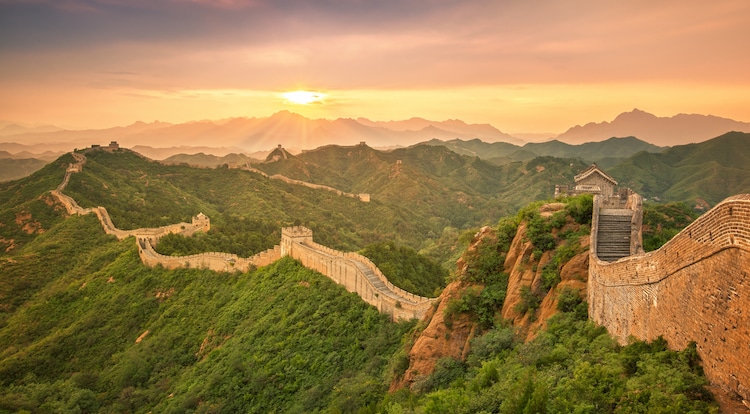
Photo: Stock Photos from sofiaworld/Shutterstock
As one of the most iconic man-made monuments in the world, each year the Great Wall of China draws millions of visitors from around the world. The immense fortifications are a triumph of engineering and stretch far across northern China. First designed to protect territories in China against nomadic tribes, it was also used as a customs depot along the Silk Road to keep order at the border.
With such a long, rich history—its construction stretches over 2,000 years—there’s much to learn about the Great Wall of China. Originally made from simple rammed earth, it was eventually created in bricks that were laid by millions of workers. In fact, it’s been estimated that 70% of the Chinese population was involved in building the early sections of the Great Wall created during the Qin dynasty.
Intrigued to know more? Let’s learn more about what makes the Great Wall of China so special, as well as dispel rumors about how huge it really is. Read on to learn more facts about the Great Wall of China, one of the world’s greatest manmade structures!
What You Should Know About the Great Wall of China
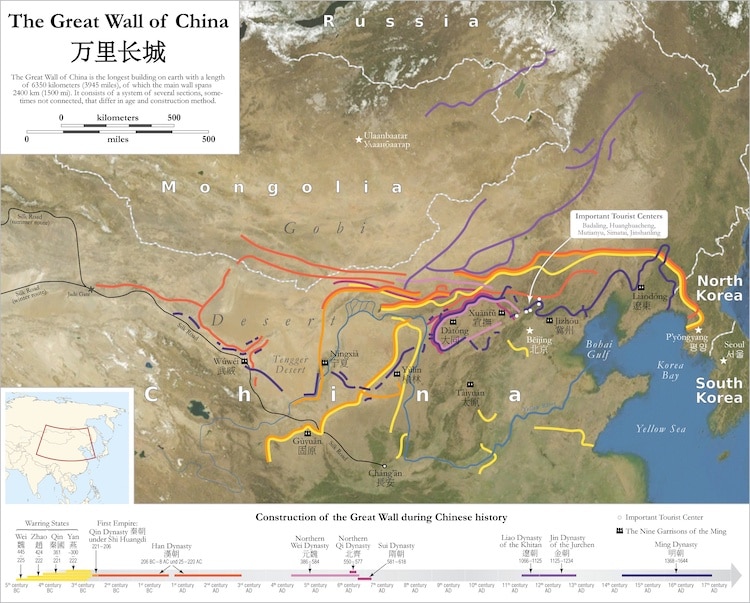
Map of the construction of the Great Wall of China. (Photo: Maximilian Dörrbecker (Chumwa), CC BY-SA 2.5, via Wikimedia Commons)
It is the longest man-made structure in the world.
The Great Wall of China is the longest man-made structure in the world at 13,171 miles (21,196 kilometers) in length. The next longest man-made structure in the world is the Great Wall of Gorgan—built in Iran in the 5th or 6th century—which spans less than 125 miles. So, it is safe to say that the Great Wall of China will keep its title for a long time to come.
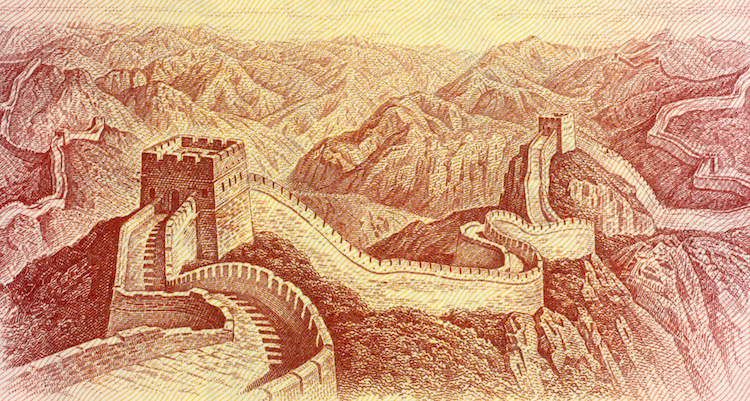
Photo: Stock Photos from Georgios Kollidas/Shutterstock
It’s not one continuous wall.
While the name Great Wall of China gives the impression that we’re talking about a continuous line of masonry, that’s not the case. In reality, what’s known as a single monument is really a system of fortifications that were built by different dynasties. Many of these walls actually run parallel to each other. And, not all of these fortifications include actual walls. Trenches and natural barriers like rivers and hills are often also considered part of the Great Wall of China.

President Richard Nixon and First Lady Pat Nixon visit the Badaling portion of the Great Wall of China in 1972. (Photo: National Archives)
What we see now is relatively new.
Construction on the Great Wall began in the 7th century BCE and was started by different ancient Chinese states. It was actually China’s first emperor, Qin Shi Huang, who began unifying these stretches of wall during his reign in the 3rd century BCE. But, virtually all of these early walls have disappeared over time. Of the 21,196 kilometers (13,171 miles) of Great Wall, nearly half were built by the Ming Dynasty. Ruling from 1368–1644, they built up the fortification to keep out the nomadic Mongolian tribes to the north.
An official survey states that the Ming Dynasty is responsible for 8,850 kilometers (5,500 miles) of the incredible monument. This includes 6,259 kilometers (3,889 miles) of actual wall, which are some of the most visited areas of the Great Wall of China today. Badaling, Mutianyu, and Jinshanling are all well-preserved sections of the wall near Beijing that attract millions of tourists each year. In Mutianyu, the Mings constructed over a previous section of wall, while Badaling and Jinshanling were both started from scratch in the 16th century CE. All of these highly touristed areas continue to be preserved for visitors, with Badaling serving as the location for official state visits—including President Richard Nixon’s historic 1972 trip to China.
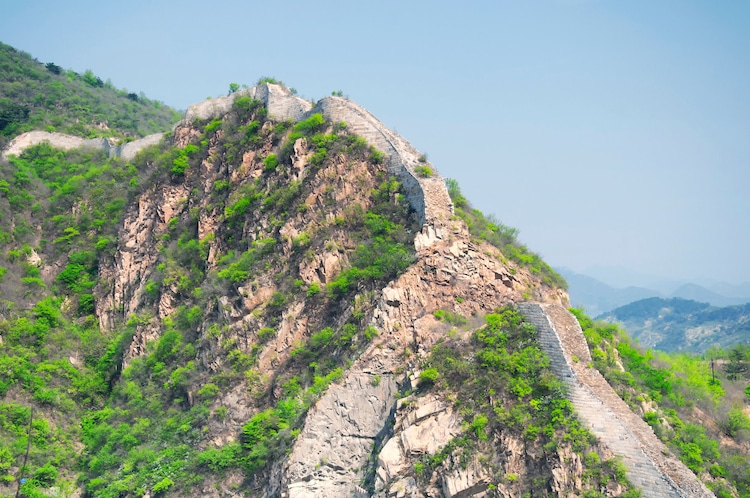
Photo: Stock Photos from Dan Hanscom/Shutterstock
Convicts were sometimes forced to work on the wall.
Over 1,000,000 people worked on the wall, including civilians, prisoners of war, soldiers, and convicts. Convicts were forced to work as laborers, especially during the Qin and Han dynasties for crimes ranging from murder to tax evasion. The soldiers would shave the heads of convicts and force them to wear iron rings. Their responsibilities included keeping watch during the day and building at night.
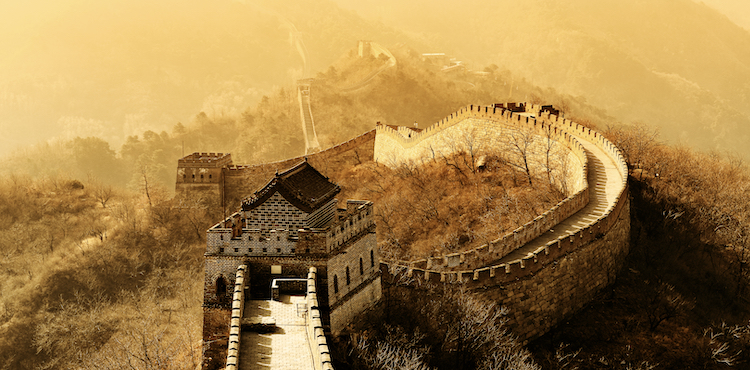
Photo: Stock Photos from Songquan Deng/Shutterstock
It’s slowly disappearing.
Stretching the equivalent of half the length of the equator, the Great Wall of China moves through 15 different regions. One can imagine that maintenance of something so large would be quite difficult and sadly this has been the case with the Great Wall. It’s estimated that 30% of the Ming Dynasty structure has already disappeared, eaten away over time after being abandoned and left in disrepair. In fact, a 2014 report by the Great Wall of China Society stated that under 10% of the monument could be classified as being in good condition, while 74% was classified as in poor condition.
Unfortunately, it’s not just the natural elements that the Great Wall of China needs to contend with. Humans also continue to inflict negative damage. Occasionally, sections in more rural areas have been destroyed to make way for land development or are dismantled for their building materials. There is also a black market for Great Wall bricks and tourists have also been known to steal these precious items. Conservation organizations are calling for the government to put more protection in place, as well as provide more education and subsidies for local communities to combat the issues.

Photo: Stock Photos from zhu difeng/Shutterstock
Builders used rice to help build.
It is no secret that sticky rice is, well, sticky. The builders of the Great Wall of China utilized this quality of glutinous rice in order to create more stable fortification. They added the rice to the mortar recipe in hopes of making it stronger. The amylopectin within the rice is one of the reasons the Great Wall of China has endured for so many years.

Photo: Stock Photos from Rui Serra Maia/Shutterstock
It can’t be seen from space.
One popular myth about the Great Wall of China is that it can been seen from outer space with the naked eye. Given its immense size, it’s easy to see why this rumor got started, but that’s not the case. NASA states that the urban legend goes back to at least 1938. It only continued to gain momentum, until the Apollo astronauts landed on the moon.
Actual astronauts have confirmed multiple times that it’s simply not the case. The Great Wall of China isn’t visible to the eye, even in low Earth orbit. One thing that prohibits its visibility is the materials it was made from. “It is very, very difficult to distinguish the Great Wall of China in astronaut photography, because the materials that were used in the wall are similar in color and texture to the materials of the land surrounding the wall—the dirt,” shares Kamlesh P. Lulla, NASA’s chief scientist for Earth observation at Johnson Space Center in Houston.
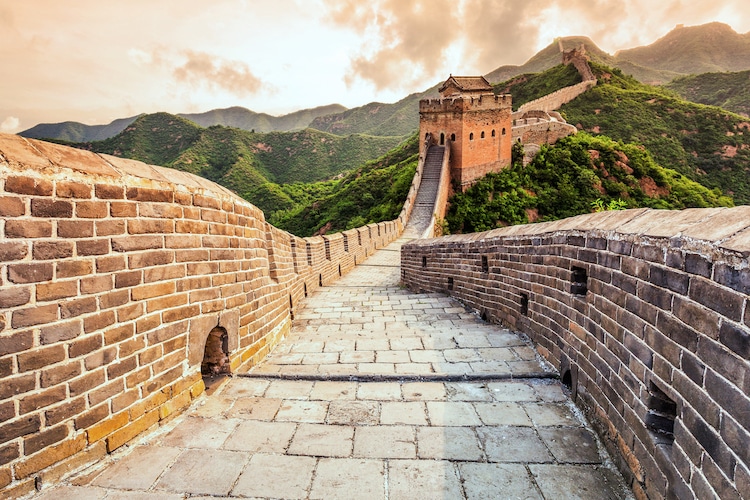
Photo: Stock Photos from zhi difeng/Shutterstock
The Wall has inspired countless stories and legends.
It is easy to imagine how such an impressive structure built by so many people might influence culture. One of the most famous examples of the Great Wall of China becoming part of culture is a story called “Meng Jiangnu’s Bitter Weeping.”
The story tells of Jiangnu’s husband dying while building the wall—he would have been one of about 400,000 who died while doing so. Her tears were so bitter that as she wept for her husband, a section of the wall collapsed and she was able to retrieve her husband’s bones in order to give him a proper burial.
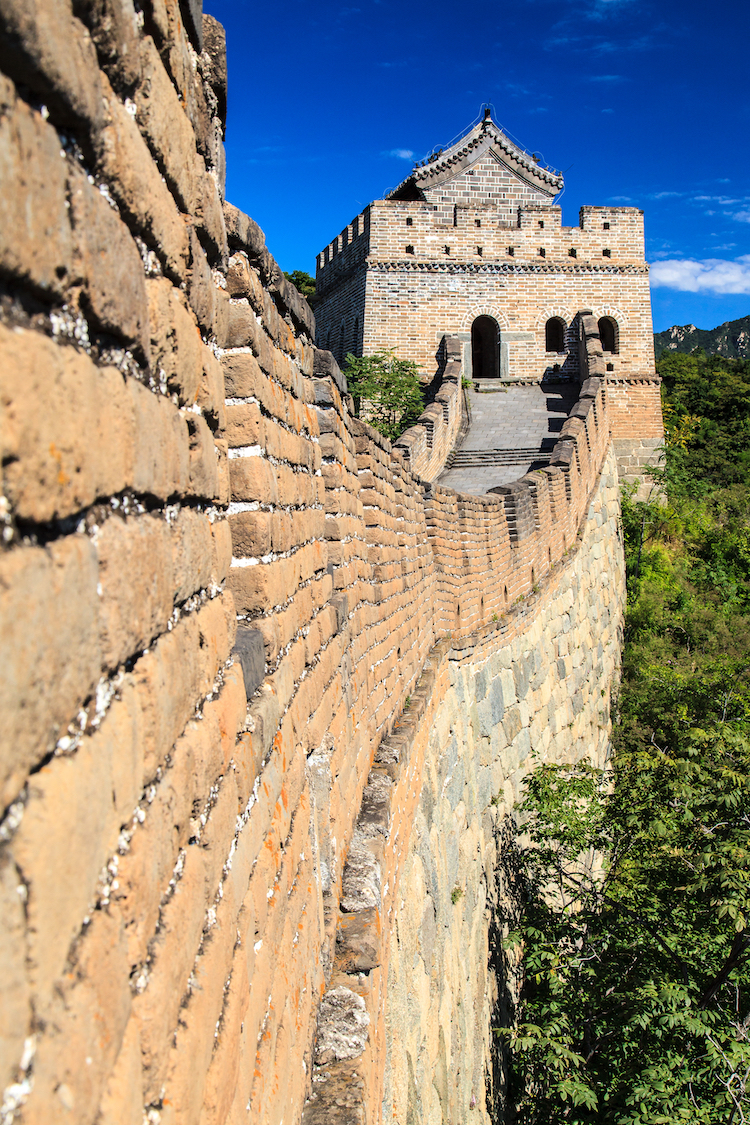
Photo: Stock Photos from Peter Wollinga/Shutterstock
New sections are still being discovered.
Given how old the Great Wall is, you might be surprised to learn that researchers are still uncovering new sections. In 2009, new sections of the Ming Dynasty wall were uncovered using infrared range finders and GPS. The 180-mile section of wall had been covered by hills, trenches, and rivers.
In 2015, archaeologists uncovered 6 miles of wall ruins on the border of the Ningxia Hui autonomous region and Gansu province—an area previously thought not to have any pieces of the Great Wall. It’s believed that the ruins are of sections built during the Qin dynasty. The nine sections were subject to flooding and natural erosion, bringing the height down to between 3 feet and 16 feet in certain sections.
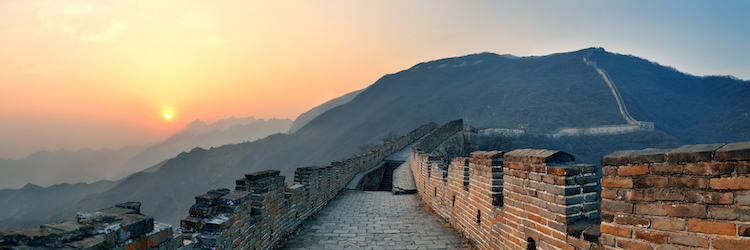
Photo: Stock Photos from Songquan Deng/Shutterstock
It’s one of the New 7 Wonders.
In 2007, the Great Wall of China was voted one of the New 7 Wonders of the World. This placed it in the esteemed company of other iconic monuments like Machu Picchu, the Taj Mahal, and the Colosseum. The list, which was started by the New 7 Wonders Foundation, is a reimagining of the original Seven Wonders of the World, a must-see highlights list created by the ancient Greeks.
This article has been edited and updated.
Related Articles:
What Is Hagia Sophia? Learn How This Sacred Space Has Evolved Over Its Long History
6 Ai Weiwei Artworks That Bravely Call Attention to Social Issues in China
Rare Photos Show a Completely Deserted Great Wall of China Covered in Fog
Unearthing the Importance of the Life-Sized Terracotta Warriors
